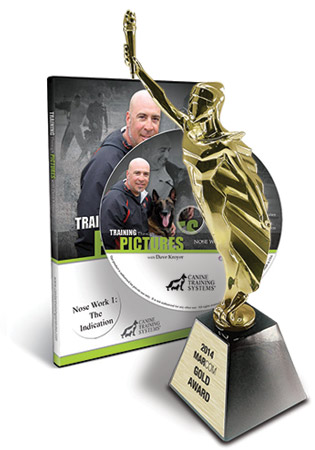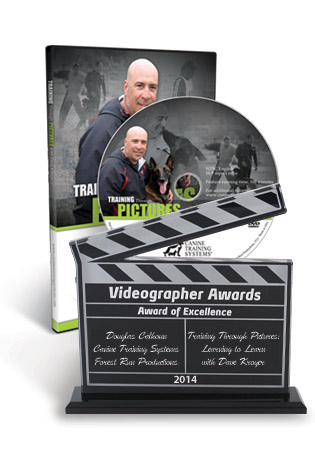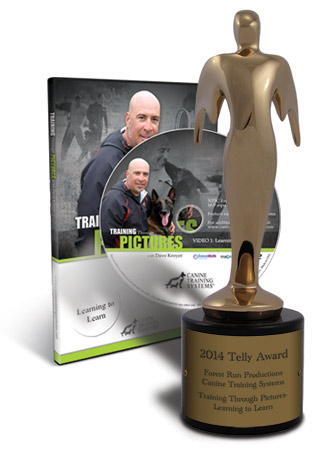Phone Interview with CTS President, Doug Calhoun, and Dave Kroyer.
In this third part of a multi-session series on toy interaction, we discussed common problems handlers have, how to schedule prey and food sessions and how to end sessions. Part 1 and 2 can be read here and here.
Q: We’ve discussed starting prey interaction with a tug and establishing rules and contracts for interaction, what problems do you see with handlers?
A: These are a lot of things I see people bypass with their dog, they’re so busy working on things like sit and heel position and all these other things but one day they are going to have to use the toy and if these formal things aren’t put in place they are going to run into a road block when that prey item is introduced.
One of the main problems though is not dedicating enough time to formal sessions or trials of teaching the dog how to play. That’s the #1 problem, the #2 problem is we may have a very large, strong dog that someone who is very small, that maybe doesn’t have the strength of a larger person, will have a very difficult time playing tug. The dog could actually be manhandling the person. It could be a 100-pound person and a 100-pound dog. A lot of times, the dog will win that fight and drag them around. This is where a game of fetch is actually better. So someone that is not strong or mobile may want to play a game of fetch.
Another problem is with impulse control. Let’s assume that the dog performed a behavior and we moment mark it and the handler can’t even reach for that toy without the dog taking our arm or hand or jacket. That stems back to not enough out training and impulse control. If we want to go back even further, it’s basic target training and how to work away from your prey and focus effort into behaviors or even stillness in the presence of prey. The reason it’s based in this is because we’ve taught the dog two things- 1. to work away from the handler and not orient toward the handler or reward source and 2. because the dog understands to work for the mark, the click in my case.
It’s interesting really and timely, because this morning I was working with my pup, a young dog actually this morning. I was working with a toy doing some targeting. The dog was outing his toy and targeting to the table for a mark to return to a dead toy that he would push into me for play. I would tug and then give him the toy and prompt him. He would drop the toy and move to the table for his mark. This is the first thing a dog has to learn, right, if you leave your toy you can have your toy and that’s impulse control.
Q: How do you schedule play sessions with food session in terms of predictability?
So we already know from Training Through Pictures- Learning to Learn how to establish food predictability. Play is really just an extension, initially of those sessions. At the end of a session of work with food, I will get the toy out and play with the dog. I will use a tug and basically begin out training from day 1. So it took like 1 week to 10 days to solidify the out from the tug, to make it very clear. Once I had that then I started working on “out then you can take it back”, and now I’m going to let go of the tug but you have to interact with me. Once I felt I had that under control, at around the 4-week period, I started playing fetch with the ball more.
Now that you understand the rules of the out, I’m going to introduce a new type of game, fetch. You go out and I throw one and I throw one, you come back and go between my legs and we play and you out the ball. I may give it back to you, you may bring it back and push it into me to play and then out, create a behavior and throw it again.
So generally, now that my puppy is 5 months old, I have prey predictability basically done.
Q: At you near the end of a session how do you prepare the dog for the end of play?
95% or more of my play sessions end with the dog taking the prey item off of the field. I still have to get it from him from wherever he’s housed whether it’s in the house or in a crate or a vehicle or dog box or trailer or kennel. But, I’m very careful that when I put the dog away not to steal the toy away. I usually have a minute or so more of work with the dog. So if I’m 5-10 feet away from where the dog is housed, I may work on outs again. An out, moment mark, give it back, out, moment mark and give it back and maybe then an out, moment mark and toss some food into the crate or kennel as a trade.
Sometimes it’s one step further because the dog understands targeting. I’ll ask them to kennel, crate or go into the trailer with the door open and when they enter I’ll click and let them return to me for the toy or ball. At some point, the dog simply won’t receive the toy again as I give a terminal cue “we’re done” and offer a piece of food. It’s never simply taking the toy away with nothing then. I want an element of trust maintained but I do have to remove the toy. It’s a balancing act and can be a bit different for different dogs but what I don’t want is the dog clamping down on the toy and me TAKING it away from him. I want the dog to believe that there is ALWAYS a possibility of him getting it back.
Q: Is there a ratio of trading of items you maintain or how do you know when to adjust things with the dog?
When the dog becomes fluid with interactions surrounding the toy, I know we have trust. With my very highly prey driven dogs, when they will approach the kennel or trailer and simply release the toy and enter, I know I have what I need from them. They know a toy session will happen and understand the lack of finality of releasing a toy- they trust enough to let it go and that it’s done, for now.
Q: What is the big problem with teaching the out from a handler’s standpoint?
There are a number of things that go hand in hand. First, not reading the dog and giving him a chance to be successful. A good dog has drive and the handler needs to consider what the dog wants. He wants his toy. The release is a contradiction initially to the transaction.
What we often see is that the dog will pull on the toy and if it’s a strong dog, the dog gets satisfaction from the pulling. Often once the handler does get the dog to let go, IF the dog willingly lets go of it, the handler is often so quick to snatch it away from the dog- to remove any possibility from the dog’s point of view that he can get it back. He’s actually really lost the toy, not simply released it. We want the dog to make a choice to leave the toy alone, the opportunity to think about what he’s doing in the presence of the toy, to be an actual part of the process, to have some control in the matter.
In the past what a lot of people would do is put a leash on the dog to block the pulling behaviors, maybe do some type of coercion training to stop the pulling. What I’ve found works really well and it doesn’t matter if it’s a puppy or a big dog is I’ll take a chair and place it along a wall close to a corner and work the dog up toward the wall. I’ll sit down in the chair and place the dog so he’s backed toward the wall. With a wall behind him and me in a chair, he can’t pull. What you’ll see very quickly is that the dog will stop pulling because the behavior is taken from him. So without gratification from that sooner or later the dog will let go. We’ve just isolated a release to be clear now. We can moment mark and give it right back to him.
So the pulling behavior is something I see with a lot of people including myself. I’m not a huge person so if I have an 80 pound dog, it can be hard on my back.
Another thing people seem to do almost instinctually is that when the dog let’s go, they move the prey away. Instead of the dog moving away from the toy, the handler moves it away. Movement is a super strong lure for the dog, it’s prey instinct. The goal is really that the dog let’s go and the toy is static. Any prey movement should only take place, if at all, after the moment marker. So in a perfect world, the dog would release the toy, show impulse control, hear the moment mark and then bite the toy again. The dog is showing super clarity here and what we should strive for.
Q: In recap Dave for purposes of this interview, what do you think needs to be emphasized here?
To get the point hit home, we kind of decided the point of this interview was that I was seeing people not devoting enough separate, formal training sessions to any type of play predictability or teaching the dog some kind of game. They just kind of assume that as the dog is older, we’ll start rewarding with a toy but there is no rhyme or reason to the system and then we create a whole other problem with the dog. What is really important is that the rules are clear, we have lots and lots of successful practice and that the dog understands how to toy works in training and that an element of trust is maintained and perpetuated.
Now with dogs with less prey drive, we have to make some conflict with the dog sometimes to really get the dog to want it. A lot of times I will tell people that if your dog doesn’t really want to possess a toy, don’t teach it an out yet. In consideration of both realms, I don’t want to sound like a hypocrite here. For a high drive dog I want to create impulse control but for a lower drive dog I want to create drive and interest in the toy so it’s really quite different than what we’ve discussed here. That will be a great topic to cover in another interview and one I get asked about a lot as well.
To be continued...









